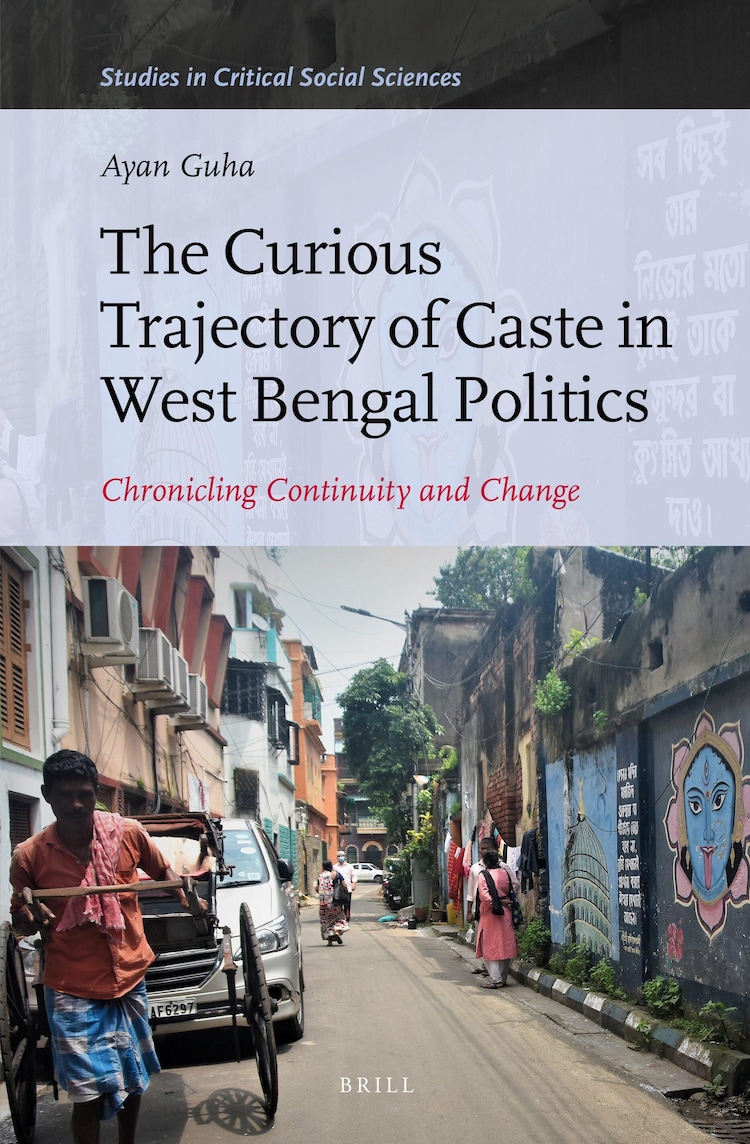
How caste shaped politics in Bengal
Ayan Guha’s recent book The Curious Trajectory of Caste in West Bengal Politics: Chronicling Continuity and Change presents a significant study of the prevalence of caste in West Bengal. Read the review of the book here.

Sambad Prabhakar, a reputed Bengali Newspaper of 19th century established by Iswar Chandra Gupta, writes in its issue of June 30, 1887: “The Brahmin caste occupies the highest position and all laws and ordinances have been formed with special reference to that. All the other castes conduct themselves after the fashion of the Brahminical castes.”
Despite the liberal idea propagated by Bengali Renaissance figures like Vidyasagar and Rammohan, caste was prevalent in Bengal. The social reforms couldn’t promulgate ideas to abolish caste. Ambedkar writes in The Annihilation of Caste: “In this connection it is necessary to make a distinction between social reform in the sense of the reform of the Hindu family, and social reform in the sense of the reorganisation and reconstruction of Hindu society. The former has a relation to widow remarriage, child remarriage, etc., while the latter relates to the abolition of the caste system.”
Ayan Guha’s recent book The Curious Trajectory of Caste in West Bengal Politics: Chronicling Continuity and Change presents a significant study of the prevalence of caste in West Bengal. It shows how caste exists in Bengal, yet not in the way it exists in many other states of India, like Uttar Pradesh, Bihar, Maharashtra, Andhra Pradesh or Karnataka.
Major political parties in West Bengal like CPI(M) or even TMC haven’t really relied on the identity politics. They are different in their electoral approach as compared to BSP (Bahujan Samaj Party), SP (Samajwadi Party), RJD (Rashtriya Janata Dal), JD(u) [Janata Dal (United)] or TDP (Telugu Desam Party).
Guha’s focus is on the “exceptionalism” of West Bengal politics in the myriad aspects in which it deals with caste. The book attempts to explore the theoretical paradigms of caste and puts them into perspective of the realpolitik picture of West Bengal, especially from the beginning of Left rule in the state in 1977.
Santosh Rana’s experience of finding at least 90 upper caste names of literary personalities among the first 100 names enlisted in Ganashakti, the official organ of the West Bengal state committee of the Communist Party of India (Marxist), is probably symbolic of a cultural mechanism in West Bengal that has rendered the question of caste as irrelevant in the post-partition socio-political matrix.
Guha starts by locating the Matua factor in West Bengal politics to understand the nature of ‘Political Mobilisation’ for a more introspective analysis of the patterns of political representation. These chapters look to find if caste has been an “organising principle of political mobilisation” in West Bengal. This is a relevant study since West Bengal, which has a considerably significant dalit population in India apart from states like Punjab and Himachal Pradesh, is yet to get any Chief Minister from a dalit family in the last 75 years (excluding Prafulla Chandra Ghosh, who belongs to a Yadav family).
Guha further analyses caste politics in terms of numbers by focusing on the demography of different caste groups and micro-level politics in rural areas. The book also looks at the material basis of caste and closes its argument by showing the interplay of bhadralok ideology and mainstream politics in the present situation of West Bengal.
As Guha himself writes in the book, “My investigation will reveal that the TMC has more or less co-opted the Left’s mode of functioning, resulting in the perpetuation an established pattern of political template informed by a complex interplay between bhadralok norms and Left-wing political discourse.”
However, where the writer talks about ‘Caste and Economic Aspects of Identity Politics’, some more complicated historical notions of caste-class interplay in 19th century Bengal could be incorporated to strengthen the theoretical basis of his argument. For example, Sumanta Banerjee’s ‘The Parlour and the Streets: Elite and Popular Culture in Nineteenth-Century Calcutta’ deals with this relationship between caste and upward economic mobility.
Guha also brings in the possibility of a structural change by the “Hinduisation of Dalits” with reference to the shift in Matua vote bank in the 2019 Lok Sabha elections. These manifold approaches make The Curious Trajectory of Caste in West Bengal Politics: Chronicling Continuity and Change a significant addition to the existing scholarship on the concept of caste in West Bengal.